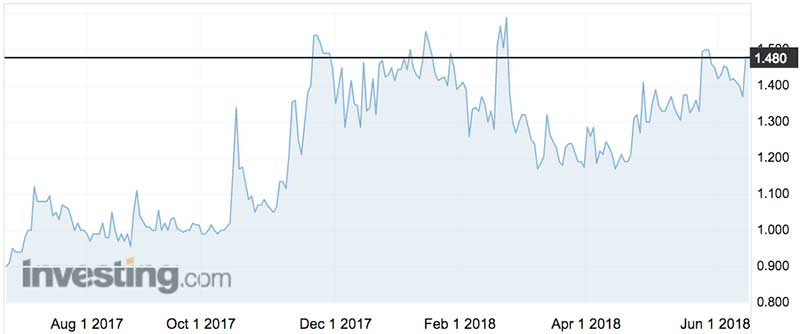Why Champion Iron Ore is starting to deliver
Mining
Australia is not alone in building new iron ore mines and resurrecting old ones.
While nothing matches the BHP-led $4.5 billion South Flank project which got a green light last week, there are events in North America worth following, including the revival of the Bloom Lake mine by ASX-listed Champion Iron.
Champion Iron (ASX:CIA) is not widely followed in Australia because everything it’s doing is in Canada.
But it has enjoyed a steady share-price re-rating over the past 12-months — and if it hits production and export targets more can be expected.
A 60 per cent rise in Champion’s shares from 86c at this time last year to recent trades at $1.37 reflect the changes underway at the company’s primary asset, Bloom Lake, which has gone from being a bright idea to first exports in March of high-quality iron ore concentrate to customers in Asia.
Located 950km north-east of Montreal in central Quebec — home to a number of iron ore projects — Bloom Lake had a number of owners until closed by the US miner Cleveland-Cliffs in 2015.
(Cleveland-Cliffs underwent a “back to the future” transformation that also saw it sell its only Australian asset, the Koolyanobbing iron ore mine in WA.)

Champion Iron shares (ASX:CIA) over the past year.
One company’s withdrawal to the comfort zone of being a specialist iron ore miner plying the Great Lakes and feeding the revitalising US steel industry (Make America Great Again!) is an opportunity for others.
That’s why Mineral Resources (ASX:MIN) is buying Koolyanobbing and Champion (ASX:CIA) acquired Bloom Lake.
What Champion got with Bloom Lake — for a price reported to be less than $11 million — is a mine which needed a capital injection and spot of TLC (tender loving care).
That’s a way of saying it needed a new owner interested in exporting high-grade iron ore to the world rather than looking inward to the North American market, which is what Cleveland-Cliffs focuses on.
Work on revitalising Bloom Lake started soon after Champion acquired the asset in early 2016 in a joint venture deal that saw it emerge with a 63.2 per cent stake — with the balance held by the Government of Quebec.
The key numbers for Bloom Lake are:
Going according to plan
So far, everything has gone to plan for Champion which has attracted a number of high-profile investors, including the Swiss-British commodity trader, Glencore.
Glencore injected $US25 million into the project as well as providing a 10-year marketing commitment for iron ore not sold in Japan. Glencore also got a seat on Champion’s board.
For Australian investors used to simple dig-and-deliver iron mines working ore assaying between 57 per cent and 61 per cent iron, the Bloom Lake project is a little different.
The low (30 per cent) ore grade is a significant difference, which is why it has to be upgraded in a process which yields a product keenly sought in the current market where grade is king.
The next six-to-12 months will be important for Champion as it tries to prove, with its Canadian partner, that it can profitably operate a mine which was too difficult for Cleveland-Cliffs — the oldest iron ore company in the US and a specialist in upgrading low-grade ore.
Apart from anticipating what’s to come for Champion — which is also exploring for copper and other base metals in Quebec — there is a human-interest aspect to the company which can be found in chairman and chief executive Michael O’Keeffe.
A former managing director of Glencore’s Australian operations, O’Keeffe has obviously kept in close touch with his former colleagues.
But that’s not the only historic connection worth noting. After he left Glencore O’Keeffe took control of a Mozambique-based coal development company called Riversdale.
In the resources boom that peaked in 2011 Riversdale was acquired by Rio Tinto for a whopping $US3.7 billion.
But Rio found its plans to mine coal near the town of Tete and use barges down the notoriously cyclical Zambezi River proved unworkable — resulting in a huge write-off and ongoing legal problems.
O’Keeffe was not involved in the mess that Rio Tinto created after he sold Riversdale — and with Champion he has a chance to show how to develop (or re-develop) a mine in a remote location.
No-one at Rio Tinto is likely to say much about Champion’s Bloom Lake project, but it’s a fair bet a number of people will be watching closely after their company’s severe bruising with the Riversdale purchase.